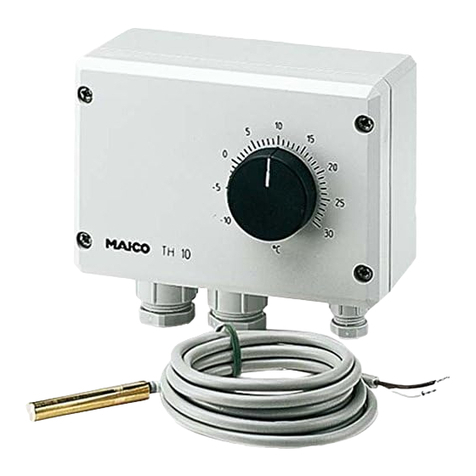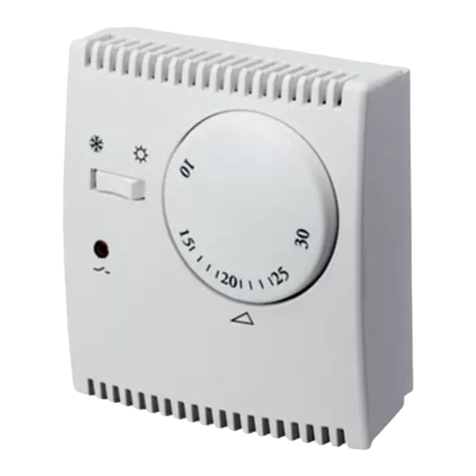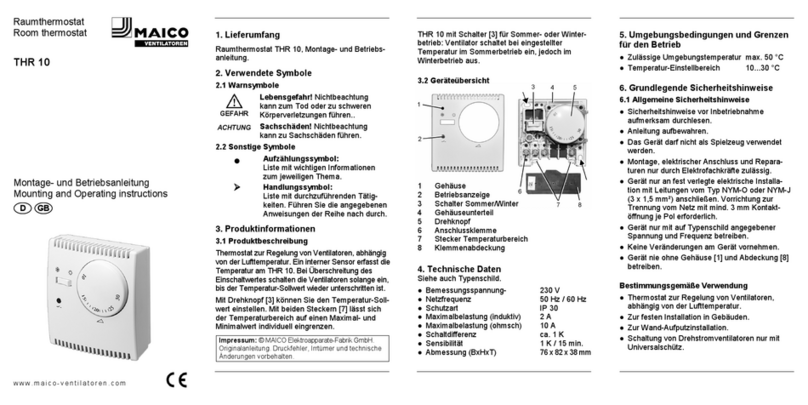
6
3.3 Predictable misuses
Maico is not liable for damages caused
by use contrary to the intended purpose.
The unit should not be used:
●Close to flammable materials, liquids or
gases.
●In potentially explosive atmospheres
●Outdoors
●With the temperature sensor located
directly above a heater or in the area of
an air inlet (disk valve, internal grille).
4. Technical data
Rated voltage 230 V
Power frequency 50 / 60 Hz
Degree of protection
Protection class
IP 54
II
Maximum load
(inductive load)
4 A
Maximum load
(ohmic load)
10 A
Differential gap 0.2 … 5 K
Interference sup-
pression in accordance
with EN 55011
VDE 0875
Interference level N
Weight 0.4 kg
Dimensions (W x H x D) 125 x 110 x 69 mm
5. Environmental conditions and
operating limits
●Permitted max. ambient temperature: 50° C
●Temperature setting range -10...+30° C
6. Essential safety instructions
6.1 General safety instructions
●Read the safety instructions through
carefully before commissioning.
●Keep the instructions.
●The unit must not be used as a toy.
●Installation, electrical connections and
repairs only permitted when carried out by
trained specialists.
●Only connect the unit to a permanent
electrical installation. Fixture for
disconnecting from mains, with at least
3 mm contact opening needed per pole.
●The unit may only be operated using the
voltage and frequency shown on the rating
plate.
●Do not make any modifications to the fan
unit.
●Never operate unit without the cover [9] in
place.
6.2 Safe and correct practices during
operation
The unit is not intended to be used by people
whose physical, sensory or mental
capabilities are not sufficient for them to
understand and put into practice the safety
information provided in these instructions.
This limitation also applies to children. The
unit may however be safely used by such
persons if they are supervised by someone
responsible for their safety or if they are
instructed in a suitable way.
7. Installation preparations
●Only install unit onto a dry, level surface.
NOTICE Incorrect measured values
can result from unsuitable
installation location! Install the
temperature sensor such that
The room temperature can be
recorded without any disturbing
influences.
It is not directly exposed to direct
sunlight.
It is not in an area prone to
draughts, hot or cold air, e.g.
near stove, fridge, radiator, etc.
It is not used in a unit with other
heat-generating devices, e.g. a
dimmer switch.
GB






























